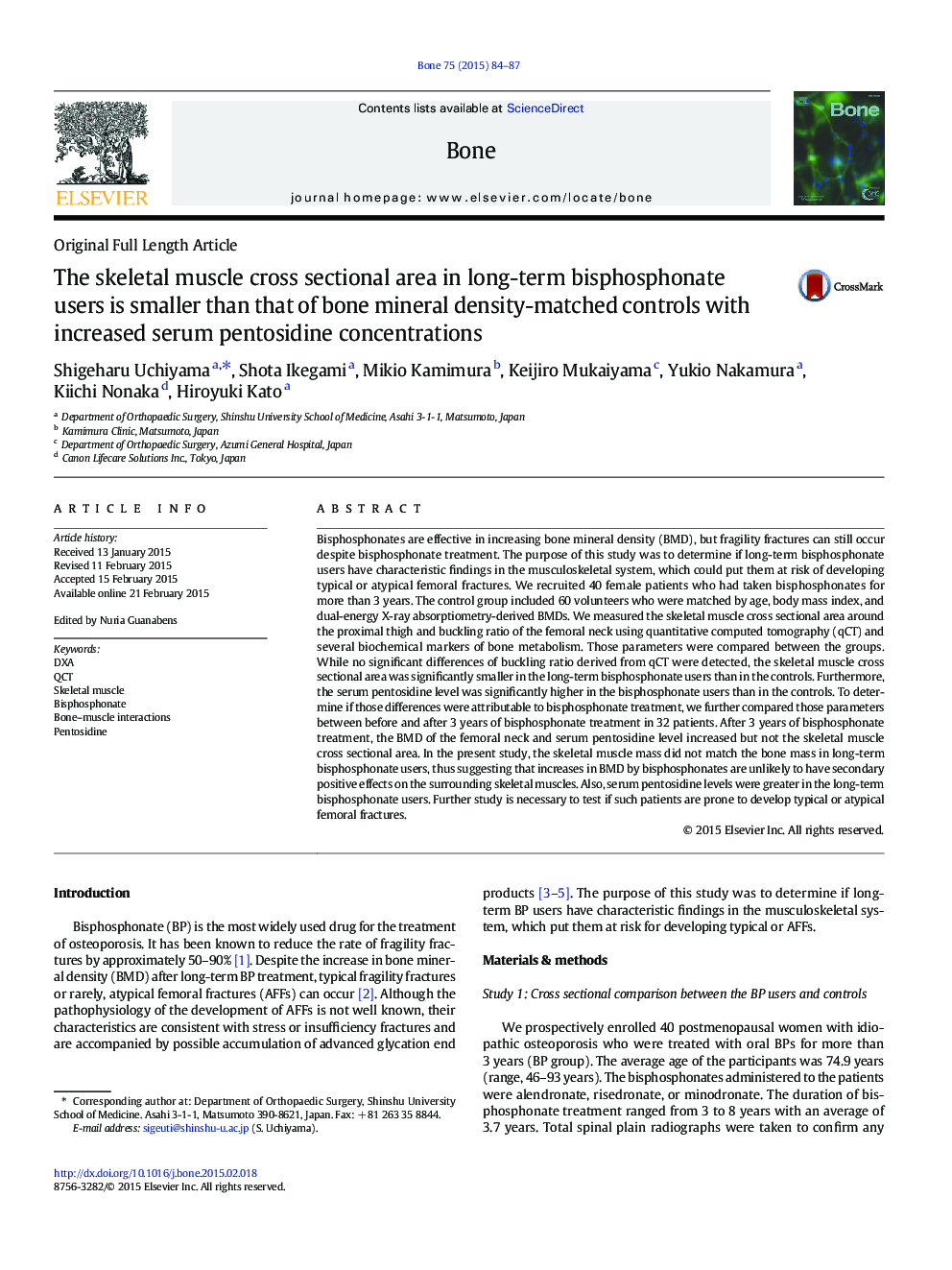| کد مقاله | کد نشریه | سال انتشار | مقاله انگلیسی | نسخه تمام متن |
|---|---|---|---|---|
| 5889726 | 1568144 | 2015 | 4 صفحه PDF | دانلود رایگان |
عنوان انگلیسی مقاله ISI
The skeletal muscle cross sectional area in long-term bisphosphonate users is smaller than that of bone mineral density-matched controls with increased serum pentosidine concentrations
ترجمه فارسی عنوان
مساحت سطح مقطع ماهیچه اسکلتی در مصرف کنندگان بس فسفونات درازمدت کمتر از گروه کنترل با هماهنگی معدنی استخوان با افزایش غلظت پنتوسیدین سرم
دانلود مقاله + سفارش ترجمه
دانلود مقاله ISI انگلیسی
رایگان برای ایرانیان
موضوعات مرتبط
علوم زیستی و بیوفناوری
بیوشیمی، ژنتیک و زیست شناسی مولکولی
زیست شناسی تکاملی
چکیده انگلیسی
Bisphosphonates are effective in increasing bone mineral density (BMD), but fragility fractures can still occur despite bisphosphonate treatment. The purpose of this study was to determine if long-term bisphosphonate users have characteristic findings in the musculoskeletal system, which could put them at risk of developing typical or atypical femoral fractures. We recruited 40 female patients who had taken bisphosphonates for more than 3Â years. The control group included 60 volunteers who were matched by age, body mass index, and dual-energy X-ray absorptiometry-derived BMDs. We measured the skeletal muscle cross sectional area around the proximal thigh and buckling ratio of the femoral neck using quantitative computed tomography (qCT) and several biochemical markers of bone metabolism. Those parameters were compared between the groups. While no significant differences of buckling ratio derived from qCT were detected, the skeletal muscle cross sectional area was significantly smaller in the long-term bisphosphonate users than in the controls. Furthermore, the serum pentosidine level was significantly higher in the bisphosphonate users than in the controls. To determine if those differences were attributable to bisphosphonate treatment, we further compared those parameters between before and after 3Â years of bisphosphonate treatment in 32 patients. After 3Â years of bisphosphonate treatment, the BMD of the femoral neck and serum pentosidine level increased but not the skeletal muscle cross sectional area. In the present study, the skeletal muscle mass did not match the bone mass in long-term bisphosphonate users, thus suggesting that increases in BMD by bisphosphonates are unlikely to have secondary positive effects on the surrounding skeletal muscles. Also, serum pentosidine levels were greater in the long-term bisphosphonate users. Further study is necessary to test if such patients are prone to develop typical or atypical femoral fractures.
ناشر
Database: Elsevier - ScienceDirect (ساینس دایرکت)
Journal: Bone - Volume 75, June 2015, Pages 84-87
Journal: Bone - Volume 75, June 2015, Pages 84-87
نویسندگان
Shigeharu Uchiyama, Shota Ikegami, Mikio Kamimura, Keijiro Mukaiyama, Yukio Nakamura, Kiichi Nonaka, Hiroyuki Kato,
